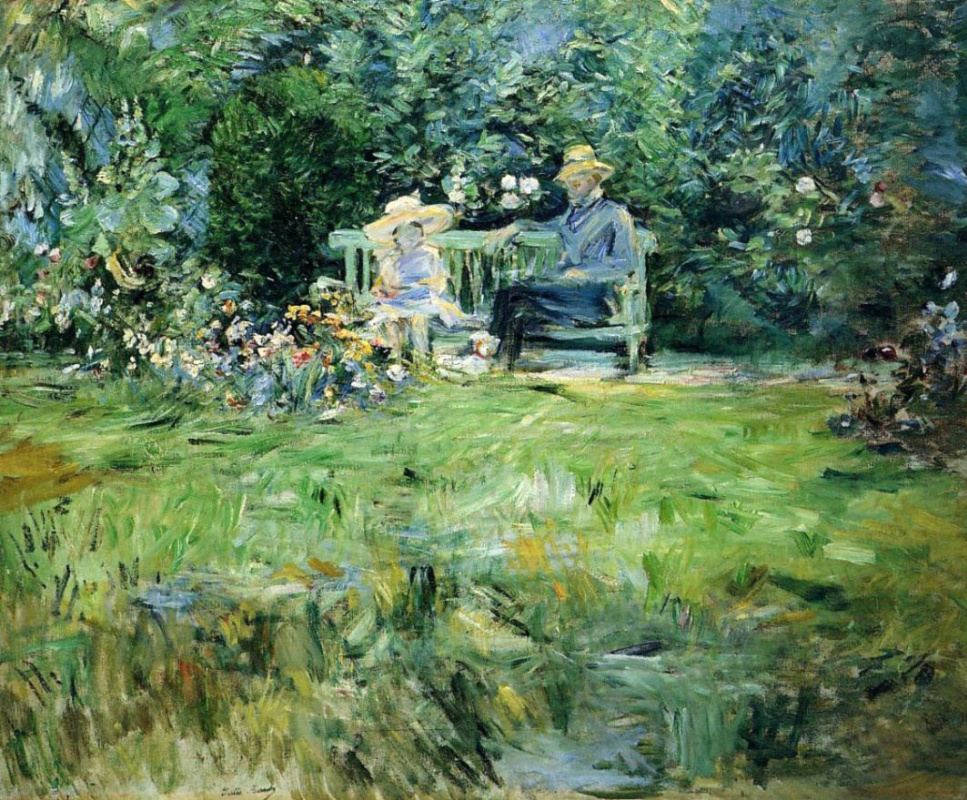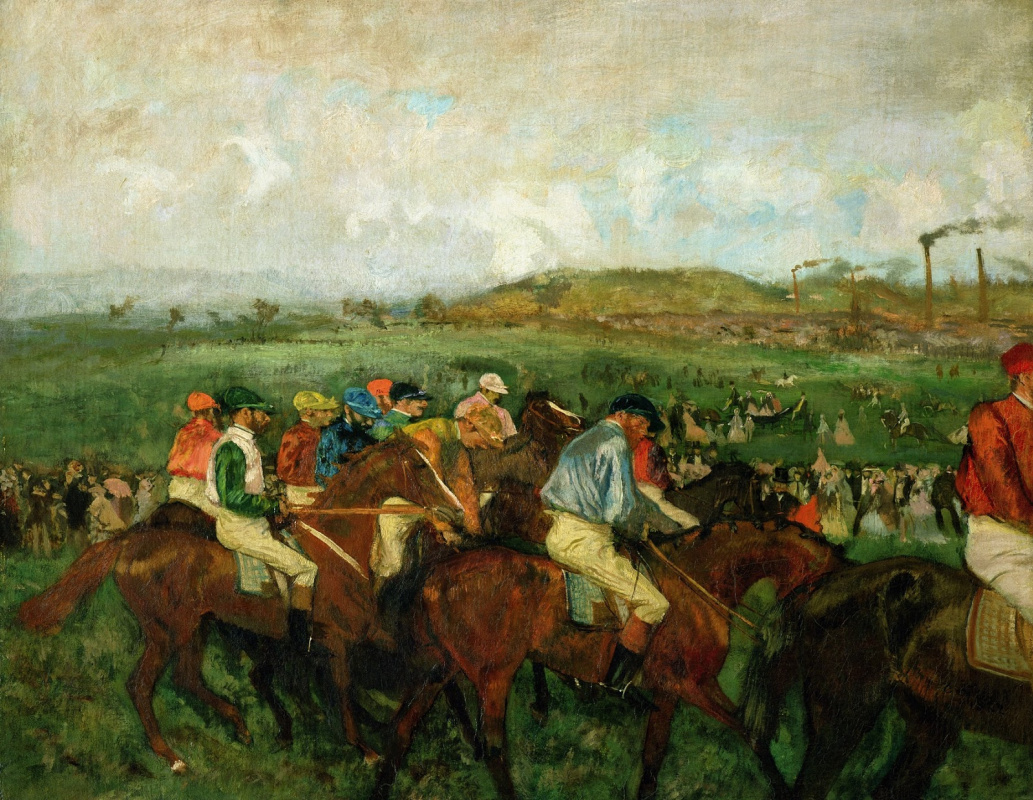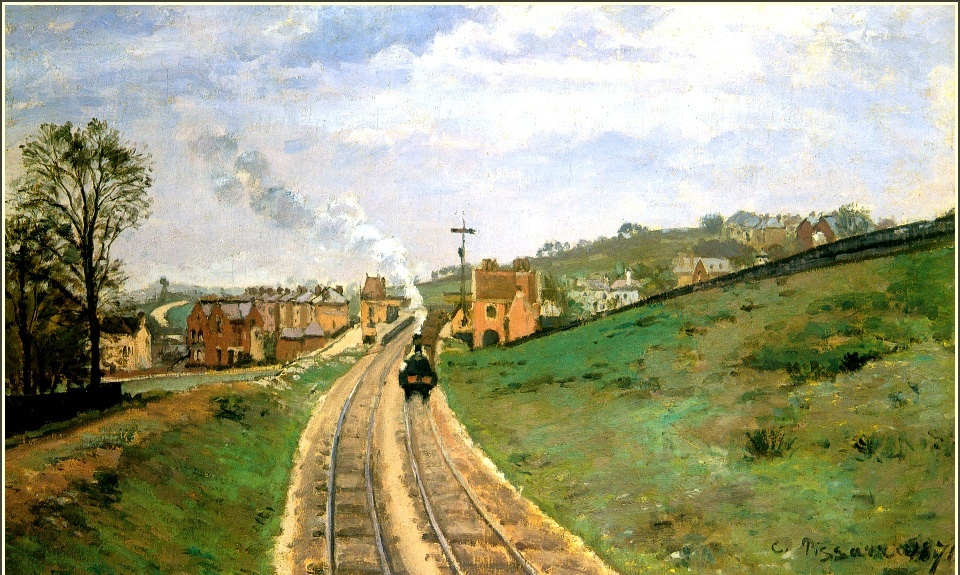The Impressionists were long-lived — a unique generation that lived to 70−80 years and was caught up in the vortex of great events and changes. The revolution, two wars, a burst of new technologies and simple everyday conveniences that changed the world forever.
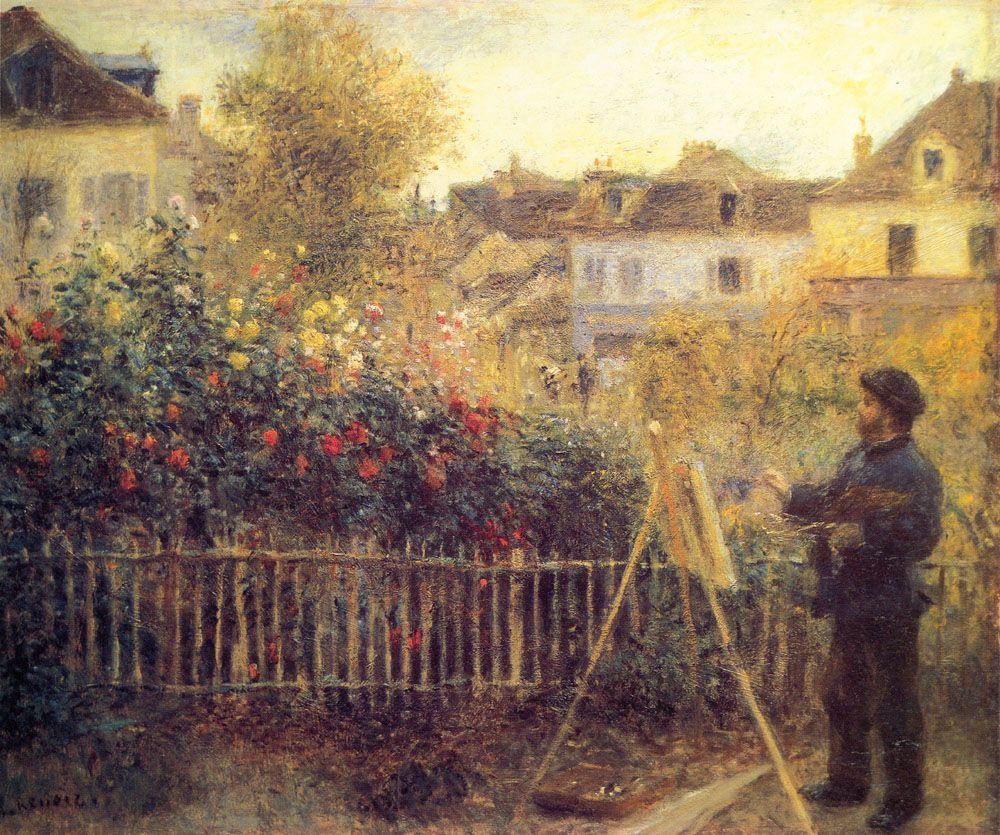
They were born before photography was invented. If you wanted a portrait of a beloved wife or children, you had to commission an artist. In order to decorate the walls of an inn or shop with a landscape or still life, you had to commission an artist. Women were still not allowed to study fine arts in school or draw nude
models without damaging their reputation. This was the world in the mid-19th century.
Bretonas at the well
1842, 25×33 cm
Jean, the son of Auguste Renoir, in his memoir of his father portrayed an unsurpassed image of Paris, and at the same time all of France, as it was in the mid-1840s:
"Paris had 1,200,000 residents: they used oil lamps for lighting; a water cart delivered water for drinking and washing; poorer people went to a well. They used wood-burning fireplaces for heating. Youngsters from the Auvergne cleaned the pipes: they climbed into a pipe, wearing stove pipe hats on their heads and a clothesline tucked under their armpits. After they put out the fire, they passed buckets of water to one another in a chain. There were no drain pits, because there was no sewage system. Chamber pots remained firmly in daily use.
They grew vegetables in garden patches behind their houses or bought them from a neighbor’s garden. Wine was sold in jugs, because bottles were considered a luxury; youngsters working at glass factories blew them, and many of these young people died of consumption; no two bottles were the same size. There were no popular sports. The poor played ball and ran after girls, while the rich rode.
Locks, carriage springs, tools and stair railings were forged by hand. Craftsmen lived in rooms above the workshop: no one made long trips by subway to get to work."
By the time Camille Pissarro was planning a trip from Paris to the Lesser Antilles, and Auguste Renoir painted portraits of Marie Antoinette on plates; by the time Claude Monet was drawing caricatures of his neighbors, and Berthe Morisot was copying old masters in the Louvre under her mother’s supervision, the old world was already in tatters. Rapid advances in science and technology had several changes in store for the future association of rejected artists, without which Impressionism would have been impossible.
They grew vegetables in garden patches behind their houses or bought them from a neighbor’s garden. Wine was sold in jugs, because bottles were considered a luxury; youngsters working at glass factories blew them, and many of these young people died of consumption; no two bottles were the same size. There were no popular sports. The poor played ball and ran after girls, while the rich rode.
Locks, carriage springs, tools and stair railings were forged by hand. Craftsmen lived in rooms above the workshop: no one made long trips by subway to get to work."
By the time Camille Pissarro was planning a trip from Paris to the Lesser Antilles, and Auguste Renoir painted portraits of Marie Antoinette on plates; by the time Claude Monet was drawing caricatures of his neighbors, and Berthe Morisot was copying old masters in the Louvre under her mother’s supervision, the old world was already in tatters. Rapid advances in science and technology had several changes in store for the future association of rejected artists, without which Impressionism would have been impossible.
The paint tube
Today, all kinds of products, such as toothpaste, makeup, paints and even food for astronauts, are packaged in aluminum tubes. But this invention is only a bit more than 150 years old. For example, Claude Monet and Auguste Renoir were born in 1840, but it was only in 1841 that American John Rand patented his invention — a tin tube that rolled up at one end and closed with a screw cap at the other. At first, these tubes were incredibly expensive, but then they started being made from lead and became extremely dangerous. More than a decade passed before the first aluminum tubes appeared, but artists weren’t the least bit concerned about either price or toxic properties, because they had a real treasure in their hands.There is nothing revolutionary in the paintings of Berthe Morisot: children, flowers, and quiet family concerns and amusements. But that’s only our opinion tempered by modern art. In her time, the artist awed passersby by painting outdoors together with male artists and applying paints with bold, deep strokes.
Before the invention of the paint tube, artists stored their ready mixed paints in pigs' bladders tied with a string. Then they pricked the bladder with a tack in order to squeeze a bit of paint onto the palette, and plugged the hole with a stud. The actual paint wasn’t available in a bladder. To make it, apprentices hired for this purpose ground earth pigments with a stone on a stone slab; or in very civilized parts of the world, ready made powder was purchased in art shops. In this case, the artist knew exactly who had worked and how long to grind this powder for him.
Paint tubes not only freed a painter from hard physical labor but also allowed him to carry paints with him wherever he wanted. Paint tubes made painting outdoors possible.
Paint tubes not only freed a painter from hard physical labor but also allowed him to carry paints with him wherever he wanted. Paint tubes made painting outdoors possible.

The evolution of the paint container. Glass syringes were an intermediate version between bladders and metal tubes, but they were not used very long or actively, because they broke.
The folding easel
It is not known for certain who was the first to carry an easel out to fields and woods. However, this invention was probably the most essential one after portable paints. Before artists were hoisted up cliffs above the sea or pulled in bitter cold to draw ice floes on a river, their predecessors preferred a warm studio, so they had no need to carry an easel with them from place to place.And if this crazy idea occurred to anyone, several strong assistants would be needed — moving a studio easel, let alone carrying it outside in search of the right subject, was utterly unrealistic. The new easel folded up into a small bag and was carried as hand luggage on a train or boat, or in a pinch in an handcart, to the closest field or lake.
As the iconic Impressionist, Claude Monet not only perfected the art of outdoor painting, invented and built a floating boat studio, but also became the subject of many his friends' outdoor artworks.
Claude Monet used a handcart to move his art equipment, but he most likely needed this simple transport to move his canvases. The paints were already packed in a small folding bag. But for each outdoor trip, Monet carried several dozen canvases — one for each time of day. As soon as the light changed a little, he rummaged though his sketches from the start of the day or the week before to find the matching one (for details, see the description of the Poplars series of paintings).
Claude Monet used a handcart to move his art equipment, but he most likely needed this simple transport to move his canvases. The paints were already packed in a small folding bag. But for each outdoor trip, Monet carried several dozen canvases — one for each time of day. As soon as the light changed a little, he rummaged though his sketches from the start of the day or the week before to find the matching one (for details, see the description of the Poplars series of paintings).
Hog bristle brushes and the ferrule
When new materials give rise to new techniques, sooner or later, new images and ideas follow them. In the mid-19th century, artists were literally deluged with innovations and the latest developments, like paints, easels, and brushes, of course.Soft, springy sable-hair brushes allowed the old masters to create a smooth, glossy surface on a canvas. On many old paintings, it’s nearly impossible to see the transition from one tint to the next. When stiff hog bristles started being used for brushes in the 19th century, artists wanted to leave a visible trace of this bold tool, separate brushstrokes and apply them liberally and daringly, emphasize the motion path of the hand, and even involve it in the overall flow of the artwork.
Along with new bristles, brushes underwent another tremendous upgrade in the mid-19th century. A metal ferrule appeared on brushes instead of a string. This meant that for the first time, artists had flat brushes. Not a round sable-hair brush, but a flat one made of hog bristles. Brushstrokes were now much more emphatic, and became a new method of representing variability, motion, or a momentary impression: using them made it possible to capture ripples on the water, sunlight flickering through leaves or the outline of a city dissolved in fog easily and convincingly. Working with a flat brush was difficult at first, but very fast. It was an incredible advantage for an artist trying to capture something elusive.
Photography
In 1839, Louis Daguerre succeeded in making the first photographic image of a person; and the first Impressionist exhibition was held in 1874 at the photographer Nadar’s studio. Photography quickly became a fashionable new art form that changed the status of painting forever.However, the Impressionists were captivated by one ability of this art: the ability to capture a moment of life and motion.
Riders before the start
1862, 48.5×61.5 cm
The exactness of the composition captivated Renoir and Degas more than anything else. They boldly cropped figures on the edges, and Degas allowed only a piece of the dress of an unseen ballerina or horse’s crupper to poke into the space of a painting. His ballerinas fidget, tie their ballet slippers, or simply feel bored, as if they accidentally ended up in the shot.
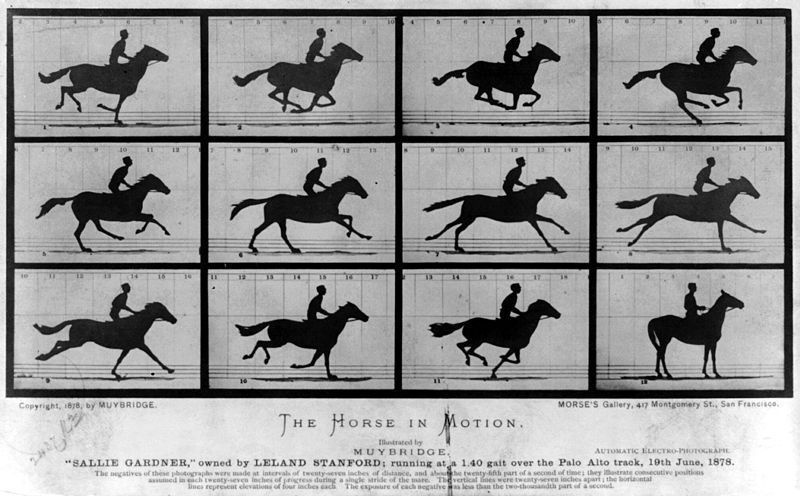
Edgar Degas bought the book Animals in Motion by the American photographer Eadweard Muybridge as soon as it was published in France. For the purpose of this study
, Muybridge built an entire "photodrome": a horse galloped, touching strings stretched across the track, which tripped a camera shutter. There were 24 cameras and 24 shots. These shots transformed the graceful animal’s movement into a series of awkward poses that fascinated Degas. Thanks to these shots, he discovered the secret of human motion. This was how his ballerinas and bathing women moved — naturally to the contrived. As in a photo taken by chance.
The railway
Without the railway, the Impressionists would not have lived long enough to see all the scenic countryside, harbors, ports, fields, cities and villages they painted. Up to 1842, when the French government decided to build passenger railways, the most common means of traveling from one city to another was by water on the unique system of canals that existed in France.Then suddenly, within a few years, everything changed — you could get to the suburbs of Paris and to the sea literally in a few hours. Thus, the hungry and unrecognized Monet and Renoir took the day train to La Grenouillère, the most fashionable, cheerful and questionable place for meetings and celebrations. There in the morning and back in the evening. Then to Argenteuil and Louveciennes, to London and Nice, to Rouen and Venice, and dozens of other places.
The railway with its smoking steam engines was a symbol of the new pace of life, a new smell and new density of the air that was not only a means of transportation for artists, but also one of the most fascinating subjects for paintings.
Lordship lane station, Dulwich
1871, 44.5×72.5 cm
Incidentally, progressive as the Impressionists were, they never accepted electric lighting. Electricity revealed no secrets or enigmas, it did not replace sunlight, and was not even suitable for lighting a studio. The invention, as it turned out, was useless for artists, unlike hog bristles and the railway.
Author: Anna Sidelnikova







